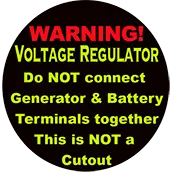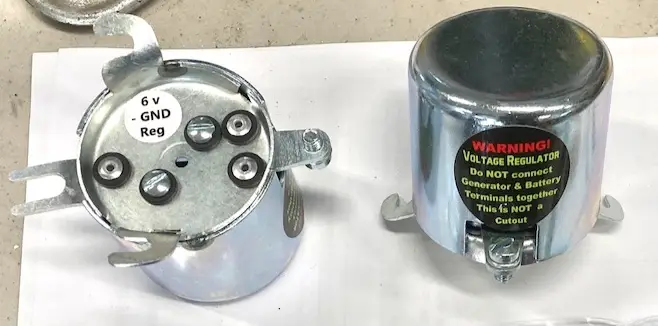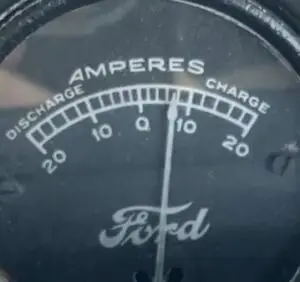Voltage Regulator Operation & Tips – Part 1
I’ve had a few folks call me and say “Hey, this thing works different from the Fun Projects Voltage Regulator” (FPVR). Yup, and that is by design. Read on to see why. Some history/context will help here.
The FPVR was a great innovation that was a much needed addition for a healthy charging system & battery. Unfortunately for us electronics guys, some practical realities exist that caused some operational problems with the way it was designed to work in our Model T cars and what we’re all used to seeing on our ammeters.
Now, performing this trick with a FPVR (or any voltage regulator for that matter, including mine) will INSTANTLY destroy the sensitive electronic components inside the VR. VR’s are not relays. They are electronics, and that’s a BIG difference. So unfortunately for all of us, folks who have been used to this diagnostic method in the past and when doing it with VR’s, they blow them up rendering them useless. The way they blow up they short the generator output to ground, so to get your charging system to work again, you have to remove the VR and install a new one, or put your old, temperamental cutout back in play. I put this sticker on the batter side of all my VR’s. Remove at your own risk!

The FPVR used PWM (pulse width modulaton) too pulse the charge of the generator on/off very quickly. If the battery needed a bigger charge, it would pulse on/off more. If it needed little or no charge it would pulse on/off less. This means when the car is running, the lights are off and the battery is fully charged, you see little if any movement in you ammeter. Model T owners are used to seeing their ammeter either + or – indicating charge or discharge, so this situation caused some to ponder if their regulator was working at all? I must confess, I was in this same boat. So, what trick do we use? Bailing wire. What happens, BOOM. The regulator blows up. I even blew one up.
With this background in mind, we can now look at how my Voltage Regulator operates differently from the FPVR in Part 2.


